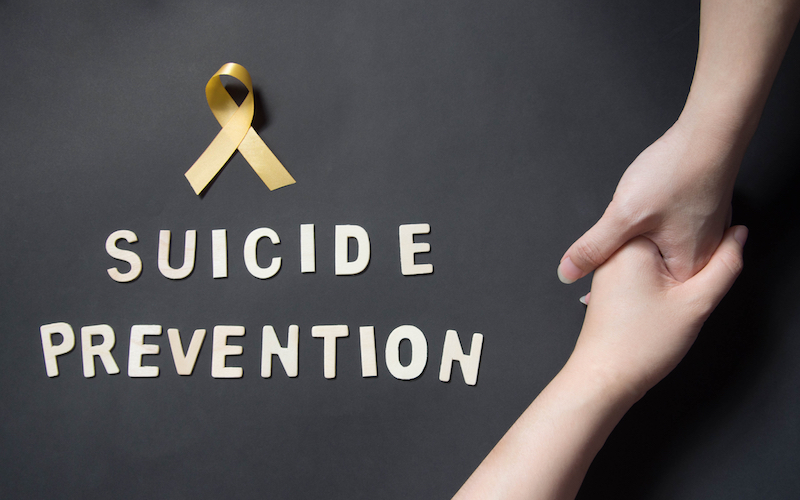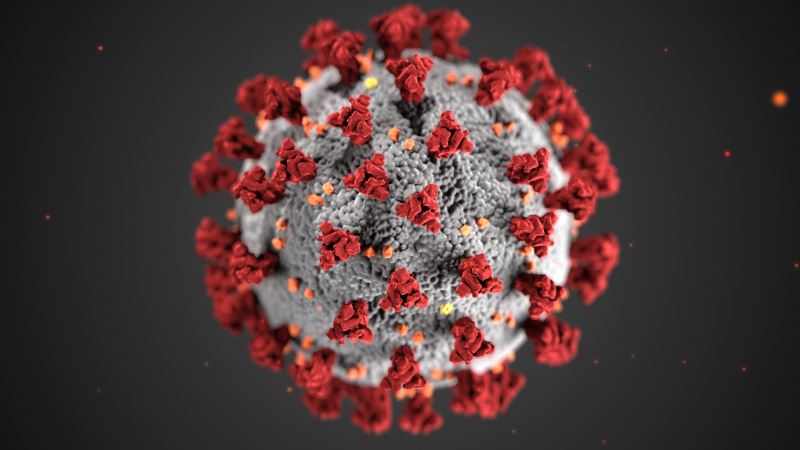
by John Davodi, MA | Oct 21, 2020 | Clinical Corner
As Covid-19 continues to hold the world in its grasp, and we as a whole are doing everything to close in on a “new normal,” it becomes apparent that some industries are incapable of working remotely. Fortunately, much of the mental health field is able to provide services remotely, thanks to telephone and video calling technology, often called telehealth or teletherapy. But most of us did not get training in how to make the switch from working in-person to working remotely. The Japanese concept of kaizen is applicable when it comes to providing mental health services remotely. Kaizen encompasses a concept that all aspects of the organization, including all employees from the top down, are subject to continual improvements. Every process, every technique, every action should be continually reviewed and assessed for improvements. Providing teletherapy is a perfect situation in which to apply kaizen, because there are ways to keep getting better. The following list may include items that seem obvious to some. But if you can learn even just one new thing to incorporate into your telehealth practice, then it is a noteworthy improvement. It is also a step toward embracing kaizen – and helping your clients. Oscar Wilde eloquently wrote, “To expect the unexpected shows a...
Continue Reading

by Ashwini Lal, PsyD | Sep 10, 2020 | Clinical Corner
Suicide is a significant public health concern. Approximately 44,965 Americans die by suicide each year [1]. This equates to approximately 123 suicides per day. Recent reports have indicated a 30% increase in suicide rates from 1999 to 2016 (10.5 per 100,000 to 13.4 per 100,000) [2]. Additionally, we know that suicide does not only affect those with a diagnosed mental health condition. The CDC data notes that approximately half of those who died by suicide between 1999 and 2016 did not have a known mental health condition [2]. Though a mental health condition can be a risk factor for suicide, other factors that can contribute to suicide include stress related to relationships, finances, jobs, housing, substance use, or physical health. The ubiquity of suicide and the increase in suicide rates over the last 17 years support the importance of community suicide education and consistent suicide assessment, intervention, and treatment among clinicians interacting with individuals at increased suicide risk.
Continue Reading

by Audrey Davidheiser, PhD | Aug 27, 2020 | Clinical Corner
“What is therapy?” Have you attempted to answer this inquiry? After working in the field for more than 15 years, I’ve discovered how some clients walk into my office with a mixture of beliefs regarding therapy. It’s possible that you, too, might need to clarify for your clients accurate versus distorted facts about therapy. Let’s settle the record. Psychotherapy is a professional, yet personal, relationship which offers necessary help for the client. When it comes to doing therapy, an impressive grasp of psychological concepts alone is insufficient. The same goes for tremendous clinical skills. Unless you understand the nature of psychotherapy, it would be difficult for you to explain it to someone else. So, let’s unpack this brief definition. Therapy Is Professional For starters, zero in on the first part of the definition: psychotherapy is a professional service. The professional part of therapy distinguishes this activity from similar services. The set of laws and ethical codes which govern our field ensures only the qualified are allowed to provide psychotherapy. Psychological treatment, including therapy, is the product of years of higher education and post-graduate training—in psychological science, theories, techniques, treatment delivery, as well as law and ethics, to...
Continue Reading

by Madeline E. Brener, PsyD | Jul 15, 2020 | Clinical Corner
Sexual-minority individuals frequently experience mental and physical health challenges, often in response to discrimination, hostility, and violence (Meyer, as cited in Heath & Mulligan, 2008).
As the research community begins to tease out the differences between the different sexual minority groups, a clear pattern of difference begins to emerge between the experiences of lesbian/gay individuals and bisexuals.
Continue Reading

by Elizabeth McCorvey, LCSW | Jun 10, 2020 | Clinical Corner
When I lead anti-racism trainings for therapists, one of the things they share with me most often when it comes to bringing up race in their sessions is, “I didn’t know if I could do it right, so I didn’t do it.” My goal is to demystify and remove the shame that many non-black/POC therapists feel when confronted with issues related to race and equity. I created a quick one-page guide for therapists/healers to use in order to initiate conversations about race with their clients. I wanted it to be something they could use right away, and then after the session, continue to do their own work. Here it is, with resources included at the end. STOP HESITATING: A quick, highly directive guide to initiating conversation with your black clients about George Floyd, Breonna Taylor, Tony McDade, other lives lost, Minnesota, Louisville, and racial trauma 1. Not sure how to start? Pick a phrase, any phrase, and tailor to your liking: a. “I’ve been thinking about you lately with everything that has been going on in Minnesota and the racial trauma you might be experiencing. Would you like some space to process?” They may tell you no! Own your discomfort. Sit with it. Move on. b. “We don’t usually talk about race in our sessions, but I’ve been wondering how the news has been...
Continue Reading

by Kelsey Ball Fomengia, PhD | Jun 3, 2020 | Clinical Corner
Having grown up in Bermuda and traveled to various countries in the Caribbean, I have always had a love of Caribbean culture and customs. From the reggae/dancehall music and traditional dishes to the unique accents and dialects, Caribbean life has always been a fascination of mine. When I began my PhD program in clinical psychology in 2012, I knew that I wanted to focus much of my research and clinical work on Caribbean populations. Research has shown that individuals from Caribbean countries are migrating to the United States in increasing frequency [1]. In an effort to provide culturally responsive and competent services, it is important to be mindful of certain factors when working with this population. 1. Diversity Although I have already used the term “Caribbean” several times, it is important to note that the Caribbean community is not by any means a homogenous group. In fact, the Caribbean consists of various countries in the Caribbean Sea, stretching from the Bahamas in the north to the coast of South America. The Caribbean community consists of larger islands, such as Cuba, Jamaica, Puerto Rico, Haiti, and the Dominican Republic, as well as smaller islands, like St. Lucia, Barbados, Trinidad, and Tobago. Each island presents with cultural differences and...
Continue Reading

by Time2Track | Apr 13, 2020 | Clinical Corner
We asked for your stories about how the coronavirus pandemic has affected your work, life, and education. Here are responses from our readers, submitted between March 24 and April 10, 2020. They have been lightly edited for length and clarity. If you’d like to share your story with us for possible future publication, you can do so here. Advocating for Patients and Hours My internship site has proposed very intense restrictions for health and safety of the patients at the hospital. All staff are screened when entering the hospital, with four questions about travel and health, and a temperature check. We are short on PPE, so only those with a newly developed cough and no other symptoms get masks or gloves. There is a lack of sanitizing supplies at our hospital, but we have all been asked to sanitize our work areas daily. Patients have been restricted from having visitors, family or interviews for outside services and resources. They have also been restricted from the treatment mall, where they used to go to various groups throughout the day. Now they are all on lockdown in their units, with an hour or two outside each day. There are a limited number of people allowed in shift briefings, treatment teams, and other meetings. Psychology is not considered essential staff for...
Continue Reading

by Ydalith G. Rivera-Pérez, PhD | Mar 11, 2020 | Clinical Corner
Content warning: This post compares helping veterans with PTSD to helping a mother have a healthy birth.During the last session of my first case using cognitive processing therapy, I realized that cognitive processing therapy has a lot in common with the business of delivering babies. Let me give you some context. I am a physician assistant turned psychologist. During my physician assistant training, many years ago, I delivered eight babies. I never expected to revisit that experience. But I did when I used cognitive processing therapy (CPT) to treat clients with posttraumatic stress disorder (PTSD) during my internship at a Veterans Administration hospital. I chose to train at a VA because I wanted training in evidence-based therapies. Having a body of research supporting the use of an intervention is very important to me. I was excited to go through the training with my cohort and start treating clients with PTSD. We received our formal training and were placed in consultation groups to discuss our cases during weekly group supervision. We were ready and eager to start. CPT for PTSD is a 12-session cognitive-behavioral intervention that addresses maladaptive cognitions and the associated avoidance that maintains the PTSD symptoms. This intervention is based on the assumption...
Continue Reading

by Jonathan Ly | Oct 2, 2019 | Clinical Corner
As you and your cohort settle into practicum, you will hear at some point about the intake process, specifically how different sites may have different ways of approaching an intake. Department of Mental Health sites in your county may have an intake form with questions that go on for several pages. For example, the Los Angeles County Department of Mental Health Adult Intake form has nine sections, with subsection questions for each one!
However, if you find yourself in a site that allows you freedom to conduct a semi-structured intake, it may still be challenging to find the balance between having an organic session with the client while obtaining relevant information that can inform your treatment plan.
Continue Reading

by Bre Gentile, PhD | Sep 5, 2019 | Clinical Corner
If you or your clients love someone who abuses substances, you may find yourself with a lot of decisions to make — including whether to continue in the relationship. While you’re making these decisions, having boundaries are like having lines in the sand. Although you get to choose where to draw the line, once it’s crossed, you need to act. Mastering boundaries is a skill that needs and deserves consistent practice. And in the end, it is up to you. These are four boundaries that can be helpful whether you stay in or leave the relationship. Here we go.
Continue Reading










